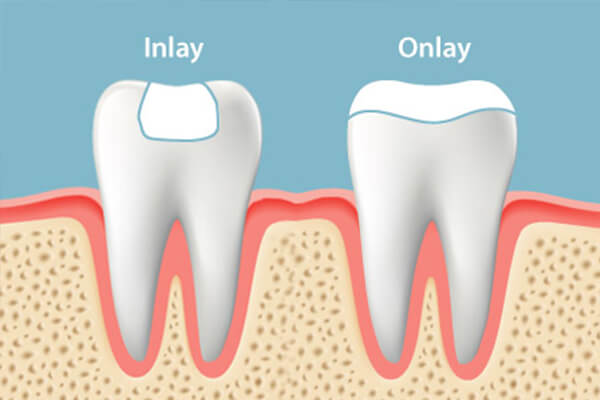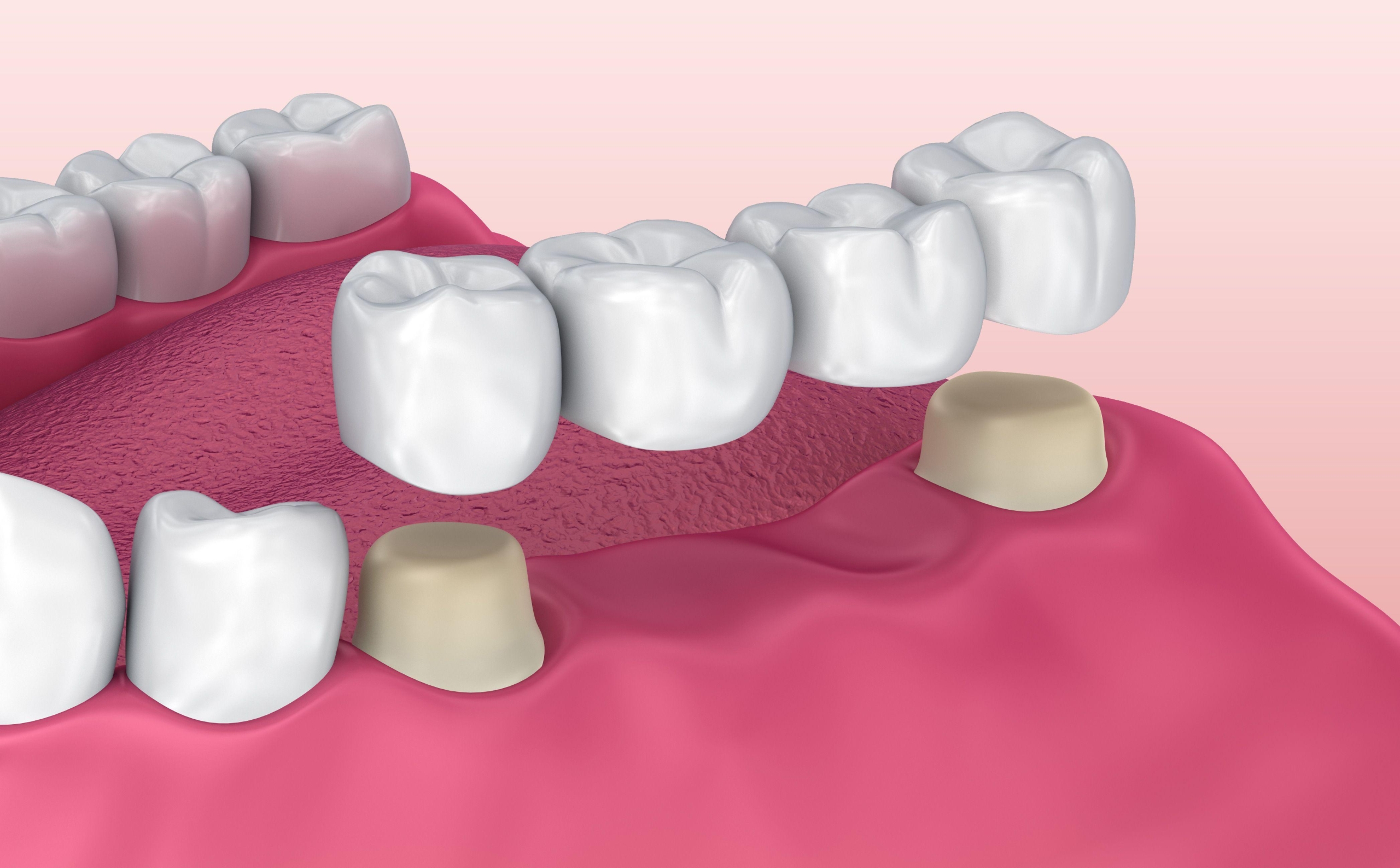Restorative Dental Care
Dentures
Dentistry is all about smiles, and having a confident, healthy, beautiful smile is important even for patients wearing dentures. Our practice provides personalized denture services that meet the needs and comfort levels of our patients. All of our patients are unique and we create one-of-a-kind dentures that feel good and look natural.
What Are Dentures?
Dentures are natural-looking replacement teeth that are removable. There are two types of dentures, full and partial.
Full dentures are given to patients when all of the natural teeth have been removed. Conventional full dentures are placed after the gum tissue has healed, which can take several months.
Immediate full dentures are placed immediately after the teeth have been removed and may require frequent adjustments during the first couple of months of use.
Partial dentures are attached to a metal frame that is connected to your natural teeth and is used to fill in where permanent teeth have been removed. Partial dentures are considered a removable alternative to bridges.

How Do I Know If Dentures Are The Right Choice For Me?
Dentures are not for everyone. If you’re interested in learning more about dentures and want to know if they are the right choice for you, please schedule an appointment. Our team will be happy to answer any questions you might have and can determine the best course of treatment for your ongoing dental health.
How Do I Know If Dentures Are The Right Choice For Me?
Dentures, just like natural teeth, require daily maintenance to stay clean and keep bacteria from growing inside of your mouth. Keep your dentures clean and your smile healthy:
- When handling your dentures, stand over a clean, folded towel or a sink full of water. This way, if you accidentally drop your dentures, they are less likely to break.
- Your dentures are not immune from plaque and tartar build-up, so it’s important that you brush your dentures every day. To brush your dentures, use a soft-bristled brush and gently brush the surfaces of the dentures being careful not to break or bend the plastic. Between brushings, it’s important to rinse your dentures after each meal.
- Use a gentle cleanser to clean your dentures. Many kinds of toothpaste, household cleaners, and mouthwashes can be too hard on your dentures, so it is recommended that you use a mild hand or dish soap to get your dentures clean. Be sure to check for the American Dental Association (ADA) seal of approval to choose products that are safe for your dentures, or ask your dentist about which products may be best for you
- When you are not wearing your dentures, they need to be kept moist. Dentures that are not kept in a denture cleaning solution or in water can dry out, lose their shape or even crack and break. Certain styles of dentures require certain soaking solutions, so be sure to ask your dentist which solution is best for you.
- Even if you have a full set of dentures, it’s important to keep your gums and tongue clean. Be sure to use a soft-bristled brush to gently clean your gums and tongue every day.
If by chance your dentures do break, please contact our practice and schedule an appointment as soon as possible. Broken dentures that don’t fit properly can cause irritation to your gums and mouth. Also, remember to continue scheduling regular dental checkups every six months to make sure that your smile stays healthy for many years to come.
Inlays & Onlays
Inlays and Onlays can be made of porcelain, gold, or composite resin. Both offer a conservative preparation that preserves as much healthy tooth as possible. They are a great choice if you have minimal to moderate tooth decay that extends into a flossing area, offering an excellent alternative to full coverage crowns.
Dental inlays and onlays are also used when old fillings need to be removed or replaced. A dental inlay is similar to a filling and fits inside the cusp tips of the tooth. A dental onlay is more extensive and extends over the cusps of the treated tooth.
Are You A Candidate?
Ideal candidates typically have too much damage or decay in the tooth structure to be successfully treated using a resin filling, but have sufficient healthy tooth remaining to avoid the need for a crown. This allows the dentist to conserve more of the patient’s original tooth structure.

What Are The Benefits?
Inlays and Onlays are durable. They help to strengthen teeth by up to 75 percent, unlike traditional metal fillings which can actually reduce the strength of the teeth by up to 50 percent.
Inlays and Onlays prolong tooth life and prevent the need for more dental treatment in the future.
Dental Bridges
Porcelain Dental Bridges
- Dental Bridges restore your smile
- Dental Bridges restore your ability to properly chew and speak
- Dental Bridges help the shape of your face
- Dental Bridges distribute the forces in your bite properly by replacing missing teeth
- Dental Bridges prevent remaining teeth from drifting out of position
What Types Of Dental Bridges Are Available?
Traditional bridges involve creating a crown for the tooth or implant on either side of the missing tooth, with a pontic (crown) in between. Traditional bridges are the most common type of bridge and are made of either porcelain fused to metal or ceramics.
Maryland bonded bridges (also called a resin-bonded bridge or a Maryland bridge) are made of porcelain, porcelain fused to metal, or plastic teeth and gums supported by a metal or porcelain framework. Metal or porcelain wings on each side of the bridge are bonded to your existing teeth.
Implant bridges – When several teeth in a row are missing, they can be replaced by a bridge attached to implants. An implant is not needed for each tooth being replaced. Three or four teeth can be replaced with just two dental implants for support. Dental implants are strong and can support the biting forces of several teeth when they are anchored together.

Dental Fillings
Traditional dental restoratives, or fillings, include gold, porcelain, and composite. The strength and durability of traditional dental materials make them useful for situations where restored teeth must withstand extreme forces that result from chewing, such as in the back of the mouth.
Newer dental fillings include ceramic and plastic compounds that mimic the appearance of natural teeth. These compounds, often called composite resins, are usually used on the front teeth where a natural appearance is important, but they can also be used on the back teeth depending on the location and extent of the tooth decay.
What’s Right For Me?
Several factors influence the performance, durability, longevity, and expense of dental restorations, including:
- The components used in the filling material
- The amount of tooth structure remaining
- Where and how the filling is placed
- The chewing load that the tooth will have to bear
- The length and number of visits needed to prepare and adjust the restored tooth
Your doctor may recommend a crown when:
- You have a tooth weakened by large decay
- The tooth had a root canal or a root canal is recommended
- There is a broken tooth or a tooth that has been severely worn down
- You need support for a tooth with a large filling when there isn’t a lot of tooth left
- You have misshaped or severely discolored teeth
- A dental implant is placed
Our crowns are custom made to match the form, size, and color of the surrounding teeth. Treatment can be completed with as few as 1-2 visits.

Dental Filling Options
Before your treatment begins, your doctor will discuss with you all of your options and help you choose the best filling for your particular case. In preparation for this discussion, it may be helpful to understand the two basic types of dental fillings — direct and indirect.
- Direct fillings are fillings placed immediately into a prepared cavity in a single visit. They include glass ionomers, resin ionomers, and composite (resin) fillings. The dentist prepares the tooth, places the filling, and adjusts it in one appointment.
- Indirect fillings generally require two or more visits. They include inlays, onlays, veneers, crowns, and bridges fabricated with gold, base metal alloys, ceramics, or composites. During the first visit, the dentist prepares the tooth and makes an impression of the area to be restored. The dentist then places a temporary covering over the prepared tooth. The impression is sent to a dental laboratory, which creates the dental restoration. At the next appointment, the dentist cements the restoration into the prepared cavity and adjusts it as needed.
How does it work?
During a chair-side treatment, our master ceramist handles everything: digital impressions, computer-based restoration construction, and milling. An intraoral camera captures the tooth, opposing teeth, and bite registration. CEREC software creates a virtual model, used to construct the restoration, which is then sent to a milling machine. The ceramist finishes by painting, polishing, and glazing the restoration before the dentist cements it.
Are You Considering Restorative Dental Care?

Why Choose Simply Smiles Miami
Receiving dental implants can significantly enhance both your daily life and overall health. However, it’s essential to choose an implant dentist you can trust before committing to treatment. While some general dentists may have experience with implant placement, they may lack the specialized training that Dr. Trujillo and his team possess for handling complex cases with expertise and efficiency. Our team warmly welcomes patients seeking first or second opinions on dental implants, including those with severe dental anxiety or multiple missing teeth. Explore our location to discover how our implant dentists’ specialized care can positively transform your oral health, overall well-being, and quality of life.
What Our Patients Say:
Don’t take our word for it, take theirs!
REQUEST A CONSULTATION
Make An Appointment

